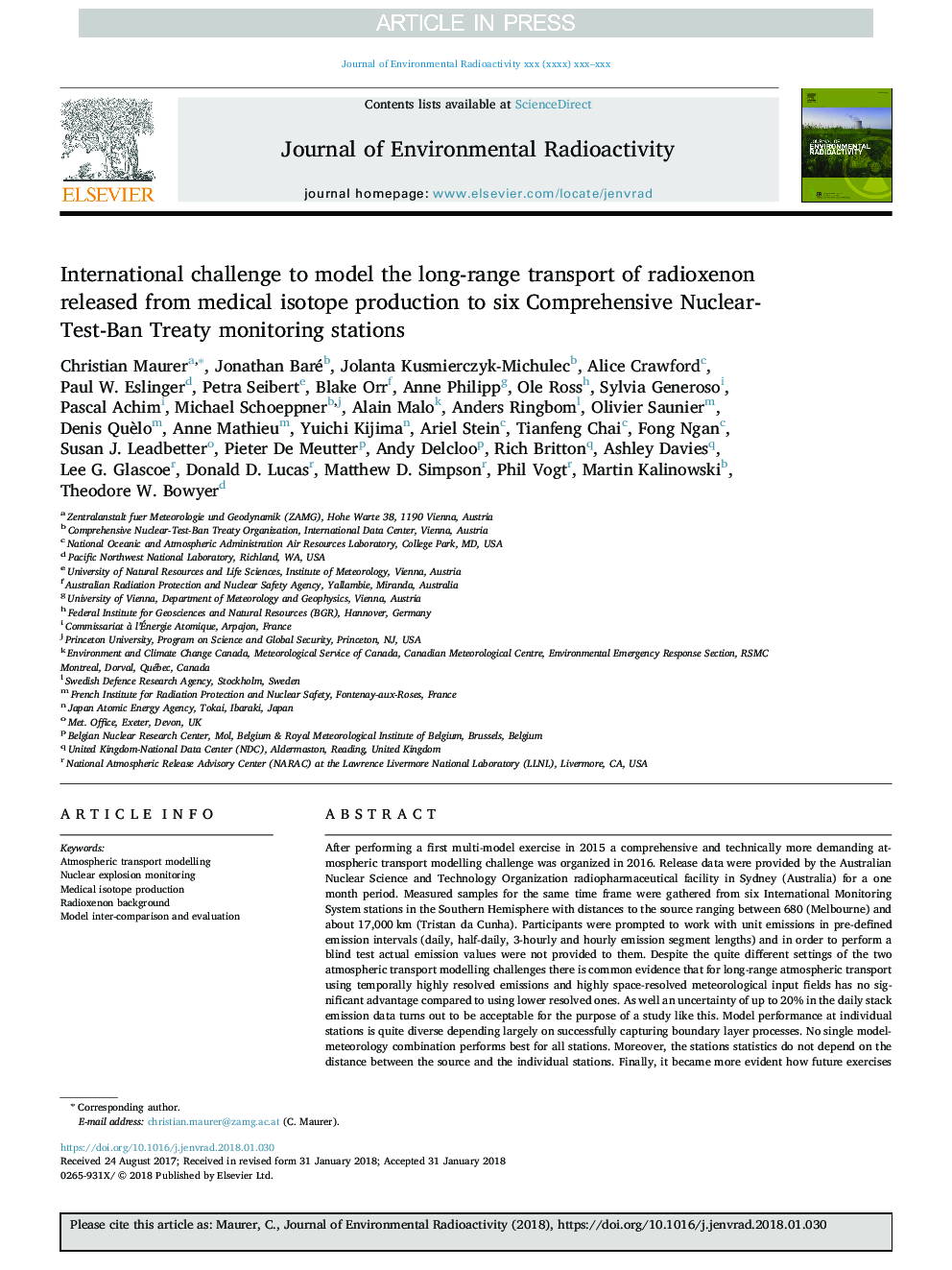| کد مقاله | کد نشریه | سال انتشار | مقاله انگلیسی | نسخه تمام متن |
|---|---|---|---|---|
| 11007416 | 1521551 | 2018 | 20 صفحه PDF | دانلود رایگان |
عنوان انگلیسی مقاله ISI
International challenge to model the long-range transport of radioxenon released from medical isotope production to six Comprehensive Nuclear-Test-Ban Treaty monitoring stations
ترجمه فارسی عنوان
چالش بین المللی برای مدل حمل و نقل دوربرد رادیو اکسنون آزاد شده از تولید ایزوتوپ پزشکی به شش ایستگاه نظارت بر پیمان جامع هسته ای
دانلود مقاله + سفارش ترجمه
دانلود مقاله ISI انگلیسی
رایگان برای ایرانیان
کلمات کلیدی
مدلسازی حمل و نقل اتمسفر، نظارت بر انفجار هسته ای، تولید ایزوتوپ پزشکی، پس زمینه رادیو سکسنون، مدل مقایسه و ارزیابی مدل،
موضوعات مرتبط
مهندسی و علوم پایه
مهندسی انرژی
انرژی هسته ای و مهندسی
چکیده انگلیسی
After performing a first multi-model exercise in 2015 a comprehensive and technically more demanding atmospheric transport modelling challenge was organized in 2016. Release data were provided by the Australian Nuclear Science and Technology Organization radiopharmaceutical facility in Sydney (Australia) for a one month period. Measured samples for the same time frame were gathered from six International Monitoring System stations in the Southern Hemisphere with distances to the source ranging between 680 (Melbourne) and about 17,000â¯km (Tristan da Cunha). Participants were prompted to work with unit emissions in pre-defined emission intervals (daily, half-daily, 3-hourly and hourly emission segment lengths) and in order to perform a blind test actual emission values were not provided to them. Despite the quite different settings of the two atmospheric transport modelling challenges there is common evidence that for long-range atmospheric transport using temporally highly resolved emissions and highly space-resolved meteorological input fields has no significant advantage compared to using lower resolved ones. As well an uncertainty of up to 20% in the daily stack emission data turns out to be acceptable for the purpose of a study like this. Model performance at individual stations is quite diverse depending largely on successfully capturing boundary layer processes. No single model-meteorology combination performs best for all stations. Moreover, the stations statistics do not depend on the distance between the source and the individual stations. Finally, it became more evident how future exercises need to be designed. Set-up parameters like the meteorological driver or the output grid resolution should be pre-scribed in order to enhance diversity as well as comparability among model runs.
ناشر
Database: Elsevier - ScienceDirect (ساینس دایرکت)
Journal: Journal of Environmental Radioactivity - Volume 192, December 2018, Pages 667-686
Journal: Journal of Environmental Radioactivity - Volume 192, December 2018, Pages 667-686
نویسندگان
Christian Maurer, Jonathan Baré, Jolanta Kusmierczyk-Michulec, Alice Crawford, Paul W. Eslinger, Petra Seibert, Blake Orr, Anne Philipp, Ole Ross, Sylvia Generoso, Pascal Achim, Michael Schoeppner, Alain Malo, Anders Ringbom, Olivier Saunier,
